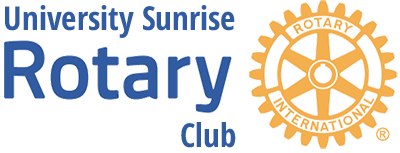
On February 4, 2021, Jonathan Mayer spoke to our club. Again. It is hard to imagine anyone more qualified to speak about the pandemic. He is a Professor of Epidemiology and Geography at the University of Washington. He is an Adjunct Professor in the Department of Medicine, (Division of Infectious Diseases), Department of Family Medicine, and in Health Services, Global Health. He is Program Director, joint degree: MPH in Epidemiology/PhD Biocultural Anthropology.
Dr. Mayer talked to our club almost a year ago; here is a summary of the talk at that time. He was great and very well received by the Club.
Some of the items of interest that he noted included:
- There are around thirty vaccines in advanced clinical trials around the world. Their mechanisms are similar.
- There are three ways to mitigate the pandemic.
- Prevention through masking.
- Treatment of the disease.
- Vaccinate.
- Herd immunity is the goal—which may require 80 percent of the population to have been vaccinated or attained immunity because of having had Covid-19.
- The vaccines probably both protect the individual from getting the disease—and limit transmission.
- Lung cells are particularly susceptible to the virus. The spike protein attaches to lung cell receptors.
- The vaccines ‘trick’ the virus. They emulate the spike protein and prevent the virus from attaching to human cells. The vaccines use different mechanisms to induce the same result.
- The first Chinese report on the virus was published on December 31, 2019. Within a couple of weeks, the entire genome of the virus had been published.
- Most vaccine candidates fail. There are lots of disincentives to develop vaccines: The science and the risks are hard. The federal government mitigated those risks for the Covid-19 vaccine with spectacular success: That was the essence of Operation Warp Speed.
- Distribution of the vaccine, thus far, has not been as successful.
- Vaccines and drugs require three stages of clinical trials for approval. Most fail during trials.
- Phase 1 involves a small number of volunteers (30-100) and looks for notable side effects.
- Phase 2 involves more than a thousand volunteers and looks for safety and efficacy. Volunteers are randomly put into drug and placebo arms of the trial to determine efficacy.
- Phase 3 involves thousands of volunteers. Moderna had 30,000 volunteers. The volunteers are randomized into placebo and drug arms and the results are compared to determine efficacy.
- For Covid-19, regulators were seeking a minimum effective rate of fifty percent.
- The Moderna and Pfizer vaccines had 94-95 percent efficacy, but these were under ideal conditions—not real the world. The effectiveness in the real world is almost always less—85 percent may be more likely.
- If herd immunity requires 80 percent efficacy, almost everyone will need to be vaccinated to achieve that goal.
- Dr. Mayer indicated the risk in open spaces and with short duration contact was very low.
- He also warned that it may be two years before we see a return to crowded sporting events.
February 14 Addendum: My slides from my presentation are already out of date since there is good news about the J and J, AstraZeneca, and Novavax products—I expect that the Johnson and Johnson will be approved by the scientific board of the FDA at the end of the week of the 22nd—and will probably be approved shortly thereafter. That is the single injection product. And while it is not as effective in totally preventing COVID than the others, it is nearly 100% effective in preventing severe disease and hospitalization. So I expect that that will make a big difference within a couple of months. I’d be glad to do an update for the group in the coming months,
